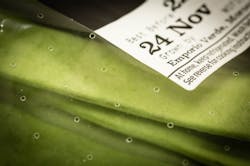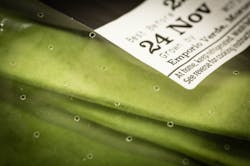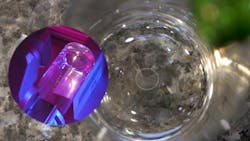Web Exclusive: Five ways laser technology is enhancing our world
Editor's Note: It seems as if low-power CO2 lasers have been around forever. Commercialized in the late 1960s for marking and engraving applications, this laser—one of the first to be a considered ubiquitous, as they began to turn up everywhere—reached a market processing buttons in China. In this century, annual shipments of low-power CO2 lasers reached the tens of thousands and as the product became more sophisticated, sealed-off, and more powerful, the range of applications served grew. Here, Dr. Louise May of Luxinar, formerly Rofin Sinar/Coherent, builds on the ubiquitous theme by selecting a few of the most common applications of these lasers that touch readers'’lives every day. One of these, denim engraving, will be addressed more fully in a 2020 issue of Industrial Laser Solutions.—David Belforte, Editor in Chief
In the almost 60 years since lasers were first developed, they’ve revolutionized the manufacturing landscape. As industry becomes increasingly automated, particularly in the era of Industry 4.0, sealed CO2 laser technology, for example, is being incorporated into production systems to deliver greater production flexibility, alongside significantly heightened levels of quality and consistency. In practice, that helps manufacturers to remain more agile and competitive in the fast-moving, consumer-driven global marketplace.
These core benefits of sealed laser technology make it suitable across almost all manufacturing sectors, including automotive, packaging, and food and beverage. In practice, this breadth of application types enables laser technology to touch the daily lives of people around the world. Let’s take a look at how lasers are used in the production of five products that are seen on supermarket shelves every day.
Food marking. One of the more surprising uses of laser technology is in precooked meat products. Often appearing to be served fresh from the grill, most of these ready-to-eat options aren’t actually grilled at all. To deliver consistency of taste, visual appearance, and overall product quality, products like burgers, fish, and chicken are typically oven-baked and may later be branded with a grill pattern using a laser. As well as ensuring consumer expectations are met, this process gives manufacturers greater control over the production process to deliver consistently high levels of product quality and safety. With laser marking being a noncontact method, the need for frequent cleaning and maintenance of tools is significantly reduced, and because the product isn’t pressed, more moisture is retained for greater taste.
Keeping food fresher for longer. With volumes of food waste around the world increasing year on year, keeping fresh food items—from fruit and vegetables through to meat and bread—fresh for as long as possible is a key priority for many food manufacturers. To do this, modified atmosphere packaging (MAP) technology is often utilized to create the optimum conditions for each product, regulating levels of oxygen, carbon dioxide, nitrogen, and other gases inside the packaging. With different products requiring different conditions, packaging must be tailored to each product type, and that’s where lasers come in. By precisely perforating packaging according to the specific needs of its contents, the shelf life of fresh food can be increased (FIGURE 1). In turn, that gives consumers more time to enjoy fresh food, ultimately reducing wastage and giving consumers better value for money.Technology in fashion. Whether it’s everyday gym clothes, favorite dresses and overcoats, or go-to shoes and accessories, laser technology enables manufacturers to deliver uniform quality and consistency on a mass scale. Take jeans, for instance. While they might once have been stonewashed or bleached, their production now utilizes laser technology to finish individual products with effects like fading, patterning, and tearing. Not only does this method enable manufacturers to significantly reduce production time, it also reduces the volume of chemicals used during the process, lessening its environmental impact. This technique also ensures that all products have consistent detailing, while the adaptable nature of sealed CO2 laser technology enables manufacturers to quickly fulfill orders in-line with shifting consumer trends.
To find out more about the uses of sealed CO2 lasers in manufacturing, visit www.luxinar.com.
About the Author
Louise May
Senior Applications Engineer, Luxinar Ltd
Dr. Louise May is senior applications engineer at Luxinar (Kingston-Upon-Hull, England).



